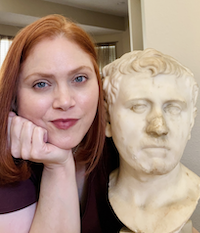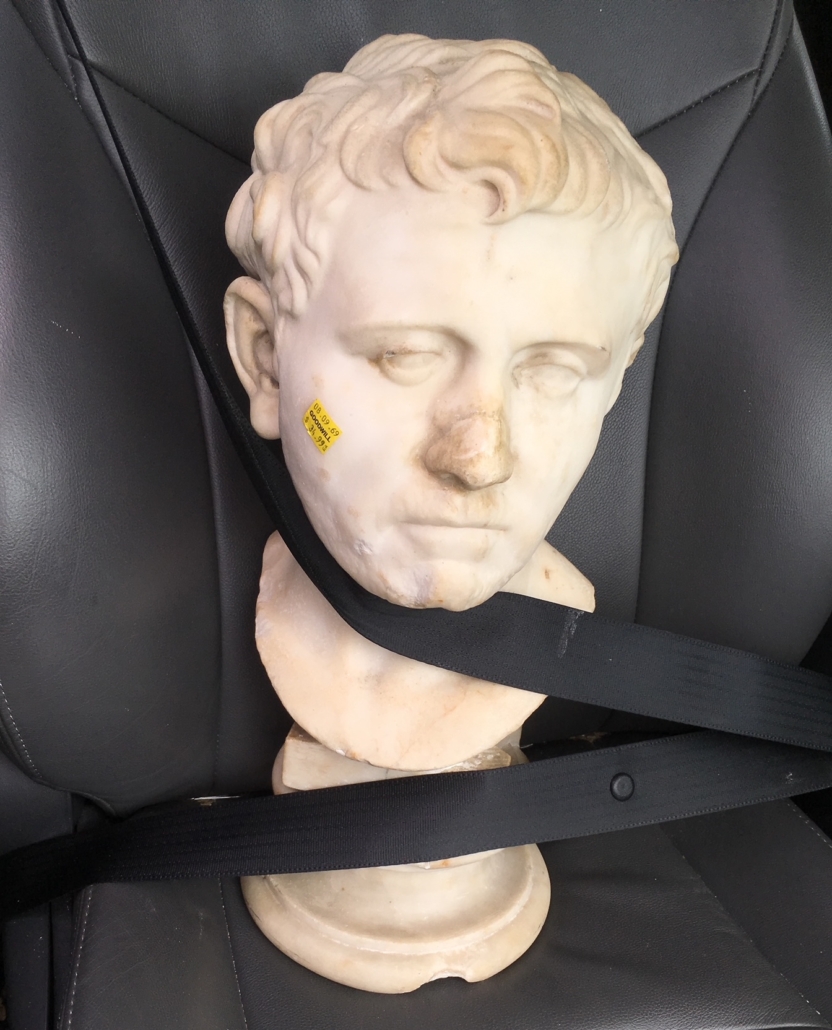
Taking home the Portrait of a man after purchasing the bust at the Goodwill in Austin. Image courtesy of Laura Young
SAN ANTONIO, Texas — When Austin, Texas-based art collector Laura Young purchased a marble bust at a local Goodwill store in 2018, she didn’t know that she had accidentally stumbled upon a centuries-old sculpture that once belonged in the collection of King Ludwig I of Bavaria. The work, which was initially identified by Sotheby’s consultant Jorg Deterling and further authenticated by the Bavarian Administration of State-Owned Palaces, Gardens, and Lakes, is now on view at the San Antonio Museum of Art (SAMA) through May 2023.
Once installed in the courtyard of the Pompejanum, a full-scale replica of a villa from Pompeii built by the King in Aschaffenburg, the Roman bust, which dates from the late 1st century BCE to the early 1st century, disappeared following World War II. It will be returned to Germany in 2023.
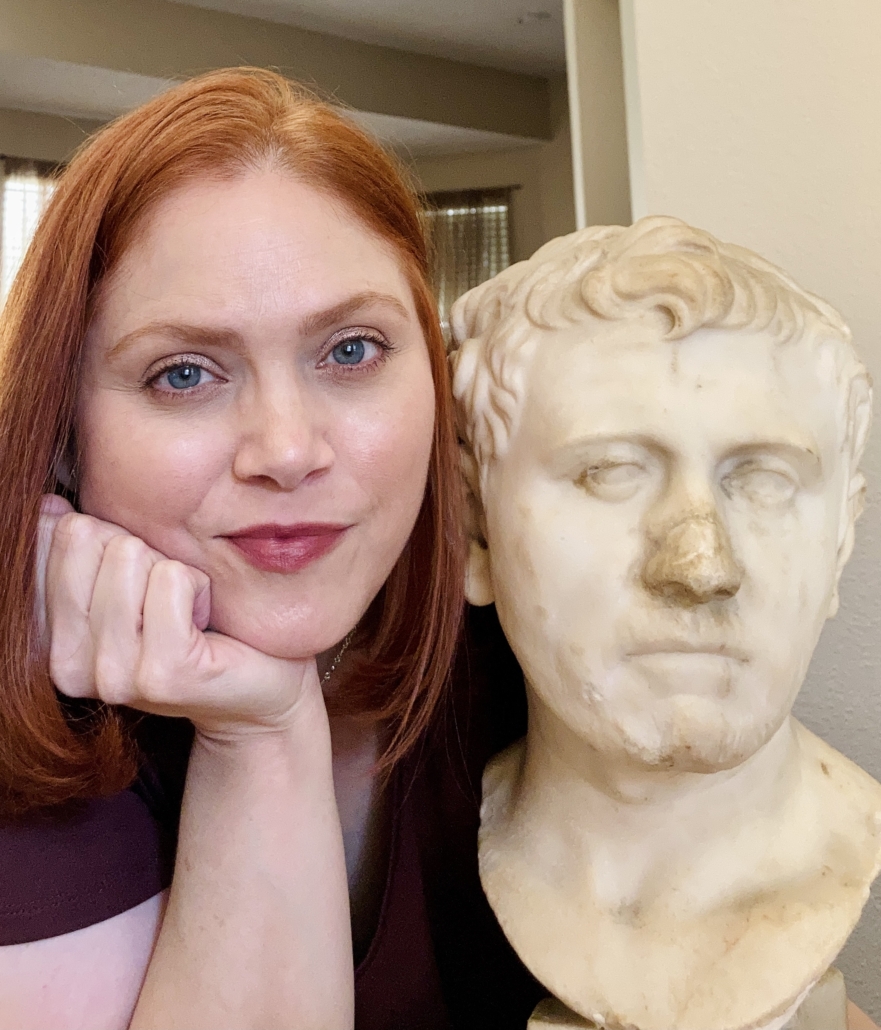
Laura Young poses with the Portrait of a man, an ancient Roman bust that she found in a Goodwill store in Austin, Texas. Image courtesy of Laura Young.
Young, who actively looks for unexpected or undervalued artworks and antiques, discovered the Roman bust on the floor beneath a table at a Goodwill. After purchasing it, she noticed how old and worn the sculpture looked and began a multi-year journey to determine its authenticity and origin. She met with experts in the classics and art history departments at the University of Texas at Austin as well as from several auction houses across the country. Ultimately, Deterling was able to make the identification and support the process of connecting Young with the German authorities. As part of the agreement to return the sculpture to its rightful home in Germany, the Bavarian Administration of State-Owned Palaces agreed that the work would go on view at SAMA to engage the public with its history and story.
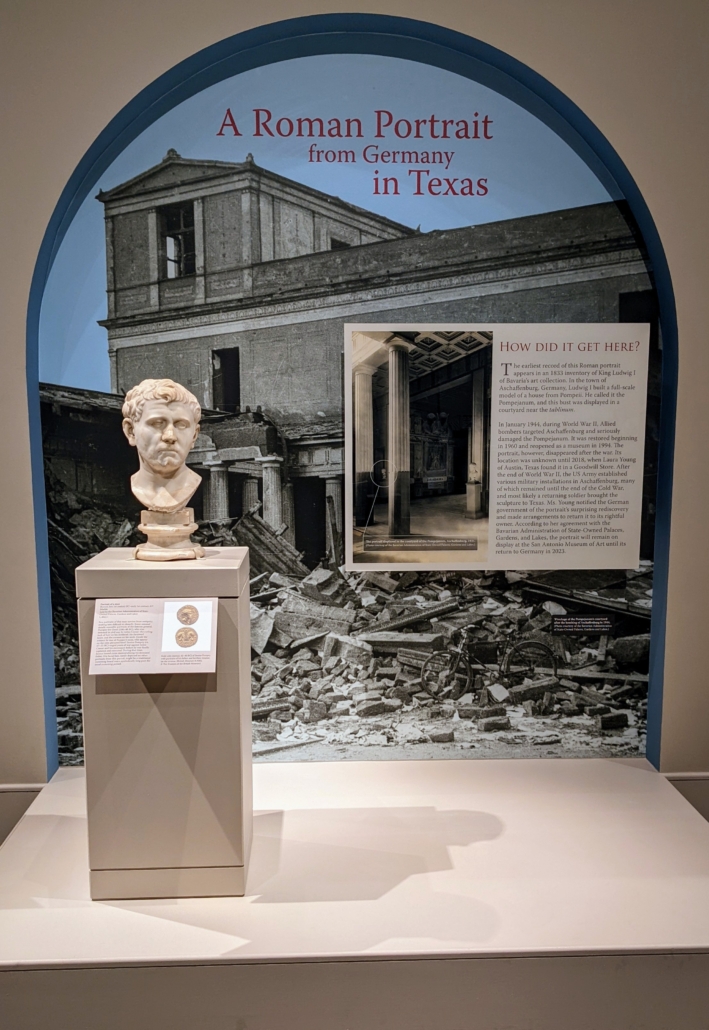
“My husband and I were on a road trip when I got an email from Bonhams confirming the head was indeed ancient Roman, but without provenance they could be of no further assistance. Soon after that, Sotheby’s got in touch,” Young said. “There were a few months of intense excitement after that, but it was bittersweet since I knew I couldn’t keep or sell the (bust). Either way, I’m glad I got to be a small part of (its) long and complicated history, and he looked great in the house while I had him.”
“It’s a great story whose plot includes the World War II-era, international diplomacy, art of the ancient Mediterranean, thrift shop sleuthing, historic Bavarian royalty, and the thoughtful stewardship of those who care for and preserve the arts, whether as individuals or institutions. We are so pleased that the Bavarian Administration of State-Owned Palaces agreed to allow us to have the sculpture on view at SAMA before it returns to its rightful home,” said Emily Ballew Neff, PhD, the Kelso director. “A wonderful example of international cooperation, this is another critical way in which our art museums participate in diplomacy around the globe.”
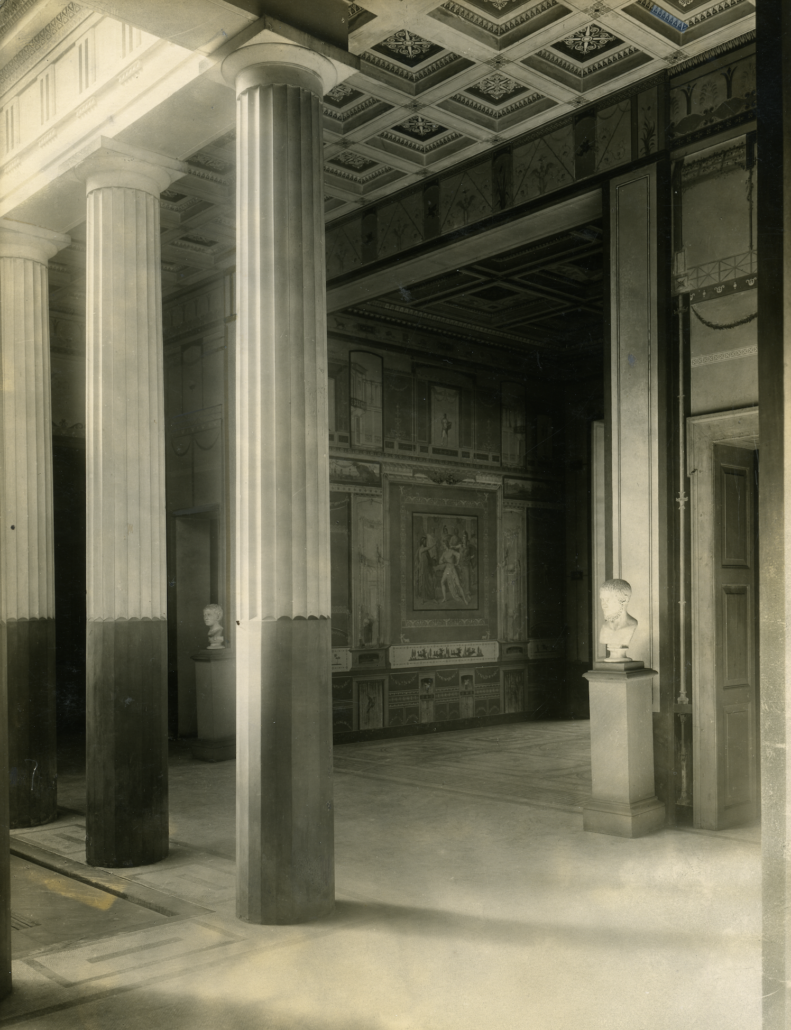
How the Roman bust arrived in Texas remains a mystery. In January 1944, during World War II, Allied bombers targeted Aschaffenburg and seriously damaged the Pompejanum, where the work had been installed. Authorities began a restoration of the Pompejanum in 1960 and it opened as a museum in 1994. The portrait, however, disappeared after the war, and its location remained unknown until Young’s discovery. After the end of World War II, the US Army established various military installations in Aschaffenburg, many of which remained until the end of the Cold War, and most likely a returning soldier brought the sculpture to Texas.
“We are very pleased that a piece of Bavarian history that we thought was lost has reappeared and will soon be able to return to its rightful location. We would like to take this opportunity to thank the San Antonio Museum of Art for their support in returning the ancient portrait,” said Bernd Schreiber, president of the Bavarian Administration of State-Owned Palaces, Gardens, and Lakes.
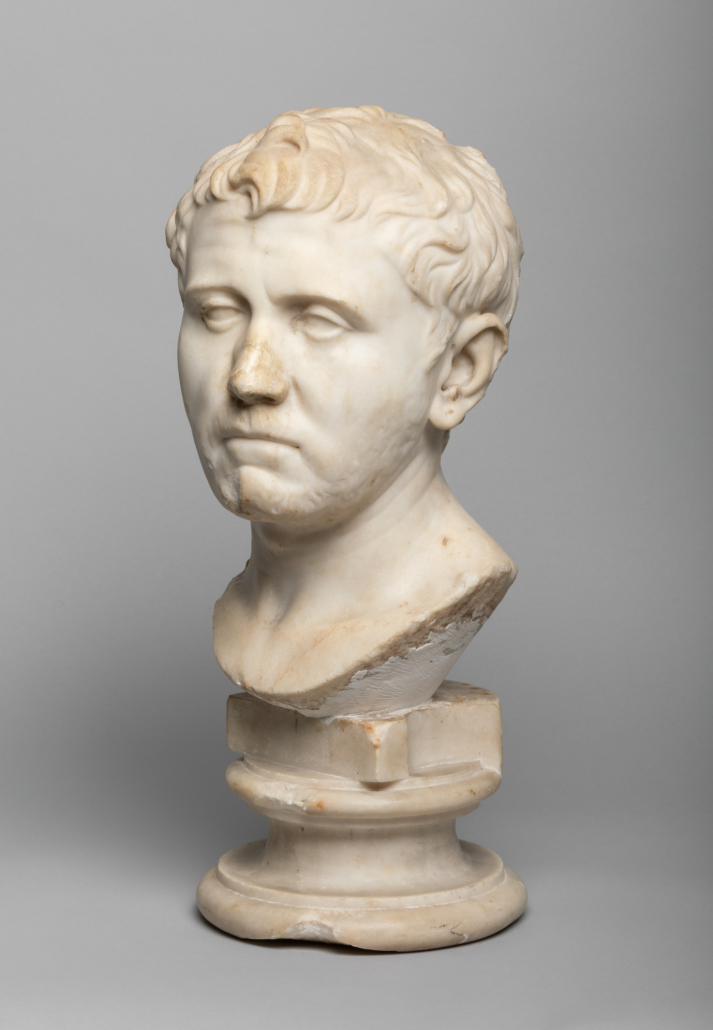
Inspired by the excavations in Pompeii, King Ludwig I had the Pompejanum built by the architect Friedrich von Gartner in 1840-1848, to support engagement with ancient cultures. The Roman bust was among many works housed in the replica villa. The bust may portray a son of Pompey the Great (106–48 BCE), who was defeated in civil war by Julius Caesar. Some unusual details of the bust resemble other portraits of the famous general, including the curling lock of hair on his forehead, his furrowed brow and the creases on his neck, but with the addition of the traditional beard of mourning worn by his sons after Pompey’s death.
Visit the website of the San Antonio Museum of Art.


